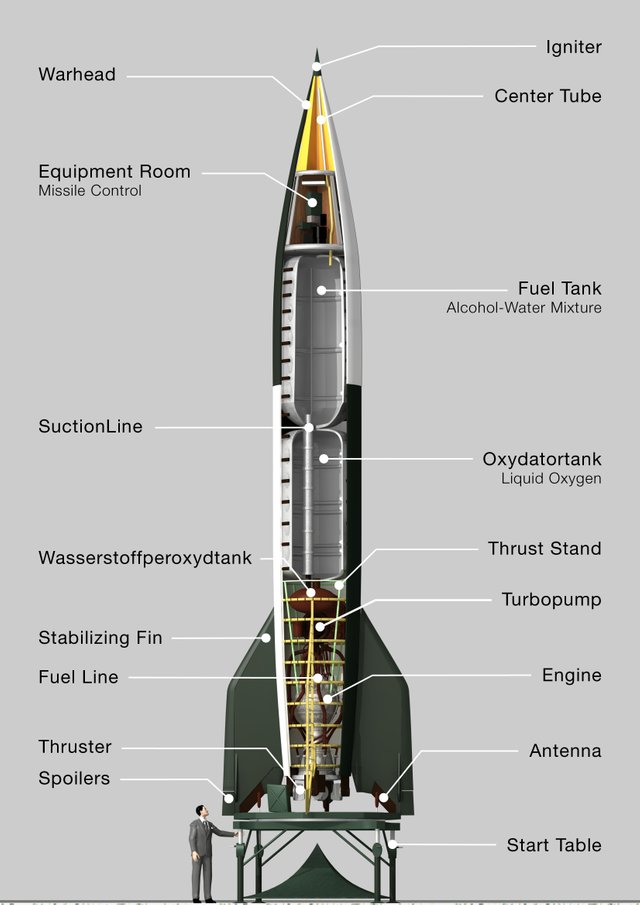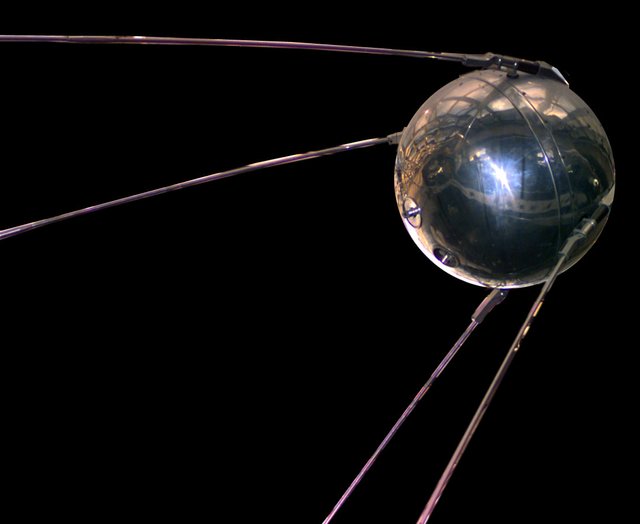The History of Humans in Space - Part One
Very few people have ever gone to space, however, it took millions to get them there.
What is Space? - The Kármán Line
The Kármán Line is accepted as the boundary between us and space. This line is where it becomes impossible to fly aeronautically, without going faster than orbital velocity. This line is 100 kilometers above sea level. The first human-made object to cross this boundary was the V2 rocket.
The V2 Rocket - 1944
The V2 rocket broke past this line for the first time on June 20th 1944. The v2 rocket was only 14 meters high and carried 900 kilograms of explosives. The V2 rocket was made to go high in the air and land without warning on target cities. This was the Germans’ last ditch effort to turn the tides of the second world war. Over a thousand were fired at England alone. Estimates put deaths in England alone, at just under 3 thousand. The V2 rockets killed far more people in the design and production steps. They were built using slave labor under terrible conditions.
The V2 rocket was fitted with a computer and adjustable rudders, which allowed it to keep itself on target. After the war the United States and the Soviet Union fought for the technology. No rockets had ever been this powerful. This was the first step in the space race, started by the last-ditch effort of a country dying in war.
source
The First Scientific Flights - 1946
On the 10th of may 1946, The United States successfully launched a modified V2 rocket into space, after failing on March 15th of the same year. It reached about 115 kilometers into the above sea level. Next they created a scientific panel to decide what scientific payload it would carry. The first was to expose corn seeds and fruit flies to cosmic radiation. After few findings they launched a camera into space, taking the first pictures of Earth from space (below). In 1948-1949 monkeys were sent into space. Their heart rate was measured to see if large mammals could survive the acceleration and the micro-gravity. The monkeys easily survived the launch and the micro-gravity, with normal heart rates. However, they died on impact when the parachutes failed.
The Soviet Union Joins the Ring - 1951
In 1951 the Soviet Union launched the first dogs into space, named Dezik and Tsygan. The Soviets used dogs because they could easily go long periods without inactivity and their trainability. Both Dezik and Tsygan survived the experience. Dezik died on the next flight while Tsygan was adopted by a physicist. This was the Soviet Union's first attempts at survivability in space.
The Year of the Soviet Union - 1957
On the 21st of August, the Soviet Union finished their first intercontinental ballistics missile. The United States developed and launched a prototype one month before the Soviet Union announced the first successful test on, August 26th. The United States’ prototype was a complete failure and barely made it 1/4 of the estimated height. Although, few details were given on the Soviet rocket at that time and doubts were cast on the authenticity of the test.
On October 4th Sputnik was launched, the first man-made object to orbit the planet. This was a major win for the Soviet Union. Sputnik is only the size of a beach ball, but it was the first major win of the space race. The United States was in the planning stages of a payload, although, it was planned to be 1/50th the size Sputnik was. In response, the United States funded another project to run at the same time. Then later the uproar directly led to the creation of NASA.
On November 3rd the Soviet Union struck again, this time with Sputnik 2. They become the first to send an animal into orbit. Laika the doggo. Laika was a stray picked up a week before the launch and shot on a suicide mission. There was a lot of public outrage over this. “The Soviet embassy in London was forced to switch from celebration mode to damage control.” - Time Magazine. One of the project workers reported taking the dog home to play, feeling bad she only had a few days to live. This was to show life support could extend this long, and that animals could survive that longer periods in space. Even though they did not have the technology to bring it back.




Short and sweet, very sweet article. Thanks for the information and I look forward to the remaining story. I already learn quite a few things, joy... Namaste :)
Thanks,
I haven't written the next part yet but it should (hopefully) be up within a few days!
Very nicely put! I remember having learned this many many years ago at high-school ^^
A very nice history lesson on how space exploration began, interesting. Well done @anarchyhasnogods.